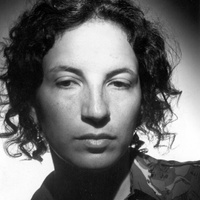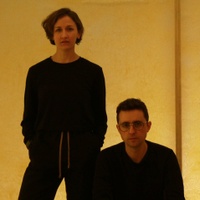On improvisation and deep collaboration
Prelude
Laura Parnes’ films and installations incorporate counter-cultural and youth-culture references, where music is integral to the work. She’s screened and exhibited widely in the US and internationally and is a 2013 John Simon Guggenheim Memorial Fellow, a 2014 NYFA recipient, and a 2016 Creative Capital Award recipient. Video Data Bank published a box set of her work and Participant Press published a book of her scripts titled Blood and Guts in Hollywood: Two Screenplays by Laura Parnes (with an introduction by Chris Kraus). She’s directed music videos for The Julie Ruin and Le Tigre.
Conversation
On improvisation and deep collaboration
Filmmaker Laura Parnes discusses the advantages of working with non-actors, the freedom involved in improvisation, and what success actually looks like.
As told to Brandon Stosuy, 2964 words.
Tags: Film, Process, Inspiration, Money, Production, Collaboration.
You’ve worked with people who aren’t professional actors, and your most recent project, Tour Without End, involves improvisation. This feels like an intimate sort of collaboration. How do you make non-actors comfortable in front of the camera? Do you record tons and tons of footage and have to edit it down? Or does it just kind of come out smoothly?
It depends on the scene, or the project. For Tour Without End, I had a lot of non-actors who were actually musicians or writers. Everyone that I asked to be in it was definitely someone I knew would be comfortable performing in some way, even though it’s not in the conventional sense of an actor, with a script. I knew that they wouldn’t deliver a stilted performance—they’re already performing, very much all the time. And so that was the pleasure of working with people who are doing readings all the time, like Eileen Myles, Brontez Purnell, or musicians like Lizzi Bougatsos.
One of my goals when setting up the improvised scenes was that I would have several plot points that all the performers were aware of, and then I would add a lot of surprise elements that they weren’t aware of, just to get a very natural response. A big part of making this work was having key actors involved, who made everybody feel comfortable, and who could guide the others through the process. For instance, I could give special instructions beforehand to Kate Valk, or Jim Fletcher, who are both brilliant stage actors—and they would help steer the scenes. But mostly, once the scenes were set up, it’s really about having the right combination of people, so that it’s guaranteed to be interesting, no matter what happens. And definitely many cameras set ups, and a ton of footage to choose from.
This isn’t the case for my other work. I used a lot of non-actors in Blood and Guts in High School, and that was really about meticulously blocking and staging the performance beforehand, and then getting them to deliver lines in a very deadpan style. But again, that had a key actress, Stephanie Vella, who was really talented in front of the camera. So even when she was completely still, she was able to convey emotion, just based on a glance. She’s a perfect film actress. It is a challenging combination, when other performers are less experienced so then choreography in front of the frame becomes essential.
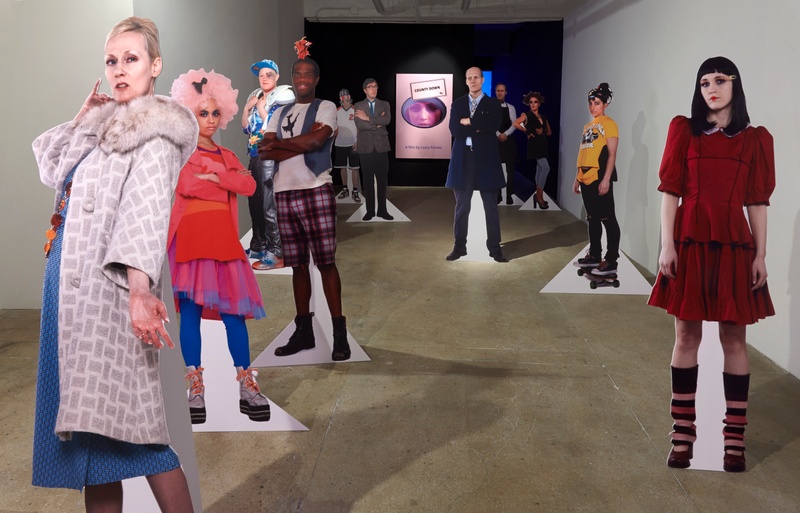
County Down, Installation View, 2013.
What’s interesting to you about improvisation?
The project I did before Tour Without End, County Down, was a feature-length animation project, but it was live-action animation. I had to have everything completely scripted and planned beforehand. There was no room for changes on set, and honestly, I just got so frustrated with that kind of pre-planning that I wanted to do something totally different for Tour.
I also really wanted to capture a rawness and urgency, the kind of performance that you just can’t get through scripting. Playing with the idea of authenticity, and also capturing a period of time in New York that is fleeting. People act as if New York is over, but I think there’s actually a very intense amazing arts scene going on, and it does crossover. There are musicians and writers and artists all hanging out together, in that kind of way we think of New York in the ’70s. But with rapid gentrification it’s in danger of collapse.
I really wanted to capture this moment in time, and I thought the only way to do that was to let the performers improvise. Part of that is they’re playing alternate-reality versions of themselves, which really allowed people to be more truthful than if you were to shoot a documentary interview of someone where they are more guarded. There’s a lot more room for expression. Or in other words, “Fiction is the lie through which we tell the truth,” to quote Camus.
I read a review that spoke about how your film, Blood and Guts in High School, was a masterclass in how to make a work for not a lot of money, but to get a lot out of it. Do your projects cost a lot to make? Are you able to find ways to fund them? Or is it difficult to find funding?
It’s a challenge each time I start to embark on a new project. For Blood and Guts, I did it in chapters over years, because I couldn’t afford to shoot a long piece. I think I got one grant for that, but it was very minor. Then for Tour, I finally received some substantial grants. It’s really taken me this long. I’ve been working for 20 years as an American artist, and fundraising is still a challenge.
I’ve developed this way of working in chapters, or episodes. I’ll do a five-minute piece—and this actually helps me to also connect to the commercial gallery world—by making elements of the project that I can exhibit and sell. Sometimes by making stills or ephemera, and sometimes editioning videos. In general, I don’t edition videos, but that’s another way to raise some cash.
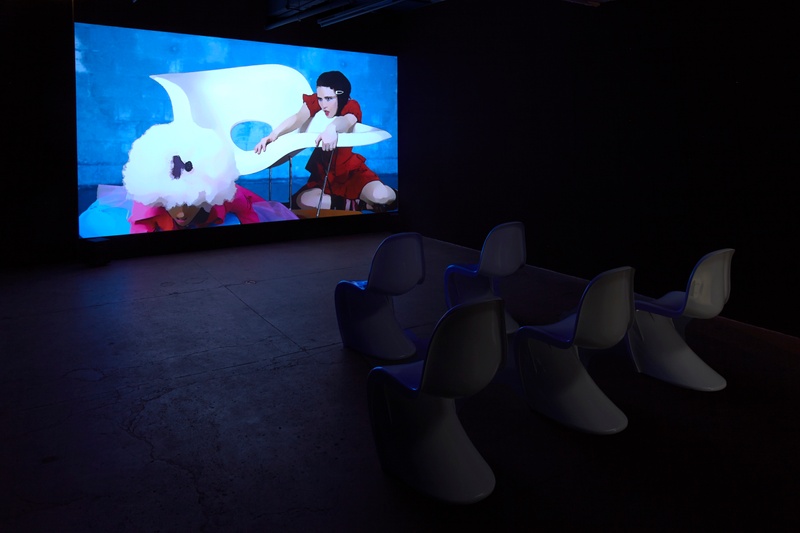
County Down, Installation View, pictured Stephanie Vella and Chloe Bass, 2013.
Mainly, fundraising is important, but I have to develop the work so that it’s affordable. For 15 years, almost every scene in my work would be shot in a gallery, and then I would have these very simple, easy-to-assemble sets. So, I relied on in-kind support, and the assistance of willing participants. However, I really believe that performers need to be paid, even if it’s a token or a gesture of payment. That is part of why it takes me a long time to make work, because that can be a substantial part of the budget.
Tour was a pleasure to make, to actually have funding! It was a real privilege to work with such a talented people and to be able to rent spaces, and set up big, complicated scenes. But still, relative to commercial productions, I’m working with a very low budget. Some of the cameras were 10 years old, but I embrace that aesthetic. At any rate, I create the work with a low budget in mind, always.
You were saying when you’re working and struggling to get things made, you still want to make sure that the people participating get paid, so they’re not giving you free labor. When you helped to found Momenta Art, was that part of the idea, too? Providing a space? One thing I’ve learned over my time in New York, is that often people just need a space to show things, or a space to make things, or a space to be able to rehearse.
Part of that was really, yes, people need a space, but emerging artists really need a room of their own, a space where the audience can focus on the artist’s work rather than the curator’s ideas. So when we opened in Williamsburg, there were two rooms, and it was like two one-person shows. As a young artist, you could be in a million group shows, but that doesn’t work for people who are making installation or conceptual work. There are so many artists in a group show, and you are seeing their work out of context. The audience is not aware of the artist’s intentions. It just lends itself to a very surface-level read. That’s why solo shows are so important.
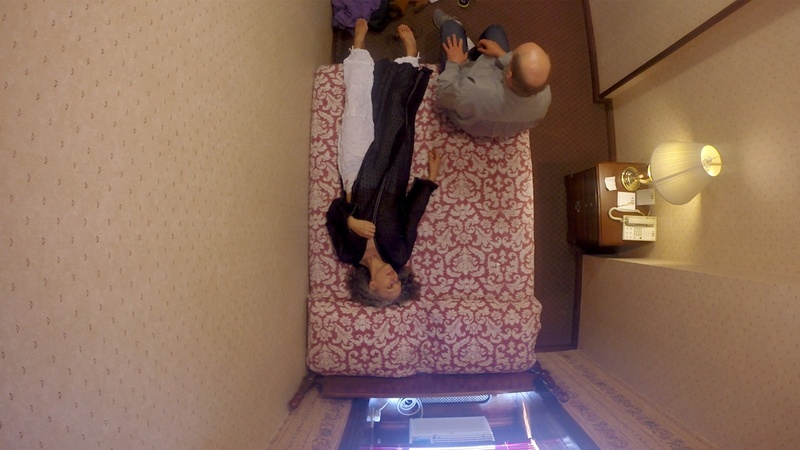
Tour Without End, directed by Laura Parnes, (pictured left to right) Kate Valk, Jim Fletcher
There’s always a lot to complain about in the art world, and we just felt like instead of complaining, let’s actually do something. And it was exhausting and difficult, but also a really great experience as an artist, to feel empowered, and to connect with super talented people who needed opportunities. You really forge your own community and the relationships I had with many of the artists continue to this day. It is really vital to artists to have those spaces at certain points in your career. It’s also vital for the community at large. It’s a shame that Momenta only exists as a migrating space now; that kind of space is still really needed.
How do you know when something’s done?
Well, Tour continues because I exhibit it with a growing archive of performances. For instance, I have something upcoming that I’m working on at Pioneer Works with Stanley Love and his dance troupe. It’s exciting, and it keeps the project present and alive. So this particular project, Tour Without End, becomes self-fulfilling.
I cut it into a feature, and that doesn’t really have an ending either. It closes with this cultural shift, with the rise of Trump, though that rise of the right was already in place for many years. That collision is where it leaves off, and we don’t know where that’s going to go. We’re in the middle of it. So in 10 years I could recut it and it might be totally different. Don’t let me do that. [laughs]
But with other things, it is always a kind of question. With Blood and Guts, I did five different chapters. It could just keep growing. I could always go back and add to it. I probably won’t, but it’s exciting for me to keep that option open. There’s so much art that’s like a three-minute pop song, and that’s the opposite of anything that I want to do. I totally appreciate someone who can make a three-minute catchy hit. But my approach is really about believing in an organic progression, and not having a canned, pre-planned way to begin and end things.
I want the work to be thoughtful and exploratory, and if that means it also feels sprawling, so be it. Tour is really about process, and a lot of this work is connected to that. I want to, as an artist, be very open to learning from and responding to the work as it develops. So, yeah, it’s hard to know what the ending is.
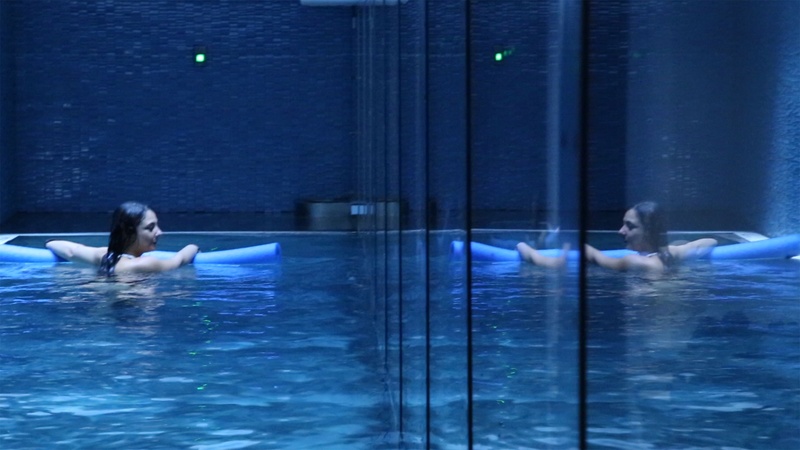
Tour Without End, directed by Laura Parnes, pictured Lizzi Bougotsos
Have you had a collaboration that didn’t work? Like, you start something, you think, “All right, this is great, I found the perfect collaborators, the perfect people to be in this.” And you start doing it, and you just realize, “Okay, this isn’t working.” Are you willing to just walk away from a project?
I haven’t walked away from much that I’ve started. That’s one thing: I commit to the end. Whether it works or not is another story. [laughs] But definitely, I’ve learned a lot from collaborating over the years, and one thing I’ve learned is that I need to be the director. It took me a while to figure that out, and it’s just a good thing to know about yourself. That being said, I also really want to listen and I am accepting of other people’s ideas, and take it very seriously, because sometimes people bring incredible insight to a project. Paying attention to that can allow for a performance that you could never get otherwise. But at the end of the day, I need to approve the final cut, and be in charge that way.
We’ve spoken a bit about Blood and Guts in High School, which makes use of Kathy Acker’s texts. Do you see it as a collaboration with her, through her imagery and words?
I never met her. I wish I had. I was very inspired by her. In college, I really connected to Blood and Guts and Great Expectations, and numerous other books of hers. I loved her humor and anger, that was right on the surface, which is unusual, in terms of women’s writing. It’s something akin to William Burroughs, this rage against capitalism. And she expressed pure rage and humor, but from this feminist point of view.
I also thought her work was brilliantly conceived, in terms of her appropriation of literary texts. She wasn’t deconstructing it, or trying to recreate this very suffocating critique of modernist texts. She actually took the literature that she loved, and brought her own viewpoint to bare on it. A critical homage. That was an inspiration for me to feel like, “Okay, I can approach her work and do the same.” There was a certain kind of freedom, and belief in rebellion that she had, that was difficult for my generation to fully embrace, because we’ve seen so much rebellious behavior fed back to us in advertising.
She was also a masochist, and thought that could be radical, and I’m sure there are ways for that to be radical, and it probably was in her case, but we have so many mainstream movies—we have Madonna getting wax melted on her, and 50 Shades of Grey. Just so many mainstream examples of masochism being presented in the safest, most consumable ways. So, I really was coming from the viewpoint of, “How do we approach this idea of making transgressive work, when it’s all been commodified?” So there’s a questioning of that, but it’s also a total homage to her work.
What do you consider to be a successful work?
I try not to look at the work as success versus failure. I try to think of it in relation to process. There are certain works that I am compelled to make at certain times. It’s important to keep challenging myself as an artist and to expand collaborative relationships with the performers I’m working with. It’s also important for me to challenge my audience as well. However, there are definitely things that have a better shelf life than others. For instance, I often make very specific popular-culture references so, the work is either instantly aged or iconic depending on how you look at it. We’ll know better how it ages in 20 years.
I definitely am always critical of my own work. I never feel like, “Oh my god, that was perfect.” Every once in awhile, I can enjoy watching my work and be like, “Nailed it.” I think all artists have to work with this. As a filmmaker, it’s not always easy to sit through your own work, over and over.
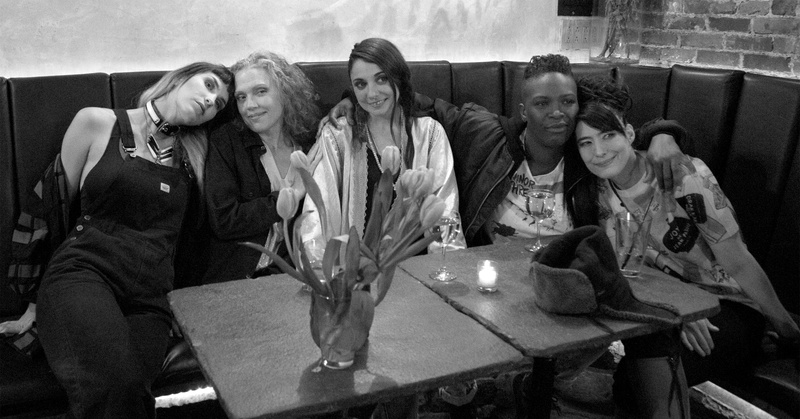
Tour Without End, directed by Laura Parnes, (pictured left to right) Alexandra Drewchin, Kate Valk. Lizzi Bougatsos, Shannon Funchess, Kathleen Hanna
How do you avoiding burning out? Do you have any daily practice of meditation, or just taking breaks? Or a way to kind of sustain a career over a period of time without deciding, “All right, I’m gonna throw in the towel and just give this up?”
I don’t encourage everyone to be a parent, and I don’t know that it’s that compatible with being an artist in some ways, but for me, it’s been an amazing experience. I just don’t want to be like those, “Everybody should have a baby” people. I’m not that, believe me. But it definitely keeps me honest, and it keeps my ego in check.
You can’t just indulge in focusing only on your own work when you have a family. You have to engage with the world in a different way. For me, that’s really been an incredible experience. You’re also seeing the world through your kid’s eyes, and focusing on things that are more important than just your vision and making your work.
There are a lot of artists who get wrapped up in the constant seeking of attention, and for the sake of our own mental health and the sake of our work, it’s essential to step outside of ourselves. With a child, you have to, and you have to be organized, you have to make decisions faster, and you prioritize in terms of what you decide to do. You spend less time wallowing in self doubt, and more time just being productive.
Laura Parnes recommends:
-
Barbara Hammer, The Art of Dying or (Palliative Art Making in the Age of Anxiety)
-
Participant Inc. - The artists include: Lutz Bacher, Virgil Marti, Charles Atlas, Kathe Burkhart, Michel Auder, Robert Boyd, Breyer P-Orridge, Renée Green, Vaginal Davis, Kembra Pfahler, Greer Lankton, Ellen Cantor, Baseera Khan, Neil Goldberg, Michelle Handelman, Eric Moskowitz and Amanda Trager, Narcissister, Lovett/Codagnone, Lizzi Bougatsos, Emily Roysden Tom Kalin, Jen DeNike, Hunter Reynolds, Conrad Ventur, Cecilia Dougherty, Peter Hendrick, Rafael Sanchez, Kathleen White, John Brattin, Elisabeth Subrin, A.K. Burns, Luther Price and Zoe Beloff.
-
Video Data Bank - Including: Stephanie Barber, Tony Cokes, Coco Fusco, eteam, Kristin Lucas, The Kuchar Brothers and Deborah Stratman
- Name
- Laura Parnes
- Vocation
- Filmmaker, Visual artist
Some Things
Pagination
